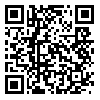1. Huff SC, Hartenstein JL. Helping children in divorced and single‐parent families. In: Wampler KS, McWey LM; editors. The handbook of systemic family therapy. Wiley; 2020. [
DOI]
2. Härkönen J, Bernardi F, Boertien D. Family dynamics and child outcomes: an overview of research and open questions. Eur J Population. 2017;33(2):163–84. [
DOI]
3. World Health Organization. Maternal, newborn, child and adolescent health and aging [Internet]. 2018. [
Article]
4. Lan X, Marci T, Moscardino U. Parental autonomy support, grit, and psychological adjustment in Chinese adolescents from divorced families. J Fam Psychol. 2019;33(5):511–20. [
DOI]
5. Wallerstein J, Lewis J, Packer Rosenthal S. Mothers and their children after divorce: report from a 25-year longitudinal study. Psychoanalytic Psychology. 2013;30(2):167–84. [
DOI]
6. Freud S. Mourning and melancholia. In: Strachey J; editor. The standard edition of the complete psychological works of Sigmund Freud. London: Hogarth Press; 1953.
7. Shimkowski JR, Ledbetter AM. Parental divorce disclosures, young adults' emotion regulation strategies, and feeling caught. J Fam Commun. 2018;18(3):185–201. [
DOI]
8. Gelo OCG, Mergenthaler E. Unconventional metaphors and emotional-cognitive regulation in a metacognitive interpersonal therapy. Psychother Res. 2012;22(2):159–75. [
DOI]
9. Besharat R, Soltani Azemat E, Mohammadian A. A comparative study of rumination, healthy locus of control, and emotion regulation in children of divorce and normal children. Pract Clin Psychol. 2018;6(4):207–14. [
DOI]
10. Haghighatian M, Hashemianfar SA, Aghababaee AA. Typology of divorce and its social consequences among the divorced women under the support of Imam Khomeini relief committee of Chaharmahal and Bakhtiari province. Journal of Applied Sociology, 2018;29(2):65–92. [Persian] [
Article]
11. Kannan D, Levitt HM. A review of client self-criticism in psychotherapy. J Psychother Integr. 2013;23(2):166–78. [
DOI]
12. Thompson R, Zuroff DC. The Levels of Self-Criticism Scale: comparative self-criticism and internalized self-criticism. Pers Individ Dif. 2004;36(2):419–30. [
DOI]
13. Gilbert P, Clarke M, Hempel S, Miles JNV, Irons C. Criticizing and reassuring oneself: An exploration of forms, styles and reasons in female students. Br J Clin Psychol. 2004;43(1):31–50. [
DOI]
14. Hashemi L, Homayuni H. Emotional divorce: child's well-being. J Divorce. 2017;58(8):631–44. [
DOI]
15. Supratman LP. A qualitative study of teenagers viewpoint in dealing with parents' divorce in Indonesia. J Divorce. 2020;61(4):287–99. [
DOI]
16. Perry G. Non-parental investment in children and child outcomes after parental death or divorce in a patrilocal society. Social Sciences. 2021;10(6):196. [
DOI]
17. Quchani M, Haji Arbabi F, Sabur Smaeili N. A comparison of the effectiveness of Clark and ACT parenting training on improving the emotional-behavioral problems of the child with divorced single mothers. Learning and Motivation. 2021;76:101759. [
DOI]
18. Gloster AT, Walder N, Levin ME, Twohig MP, Karekla M. The empirical status of acceptance and commitment therapy: a review of meta-analyses. Journal of Contextual Behavioral Science. 2020;18:181–92. [
DOI]
19. Coto-Lesmes R, Fernández-Rodríguez C, González-Fernández S. Acceptance and commitment therapy in group format for anxiety and depression. a systematic review. J Affect Disord. 2020;263:107–20. [
DOI]
20. Feros DL, Lane L, Ciarrochi J, Blackledge JT. Acceptance and commitment therapy (ACT) for improving the lives of cancer patients: a preliminary study. Psycho-Oncology. 2013;22(2):459–64. [
DOI]
21. Javanbakht Z, Manshey G. The effectiveness of acceptance and commitment based treatment on meaning of life and feeling lonely of adolescents in the alternative care center. Journal of Social Work. 2017;5(4):32–9. [Persian] [
Article]
22. Marmarchinia M, Zoghi Paidar MR. Effectiveness of acceptance and commitment therapy on hope and happiness of female adolescents under welfare protection. Journal of Applied Psychology. 2017;11(3):157–74. [Persian] [
Article]
23. Kline R. Principles and practice of structural equation modeling. New York, NY: Guilford Press; 2016.
24. Hogan S, Daryl B. Greenfield, Lee N. Development and validation of the Hogan grief reaction checklist. Death Stud. 2001;25(1):1–32. [
DOI]
25. Hogan NS, Schmidt LA. Testing the grief to personal growth model using structural equation modeling. Death Stud. 2002;26(8):615–34. [
DOI]
26. Sharifi M, Ahmadi SA, Fatehizade M. Psychometric properties of the Hogan grief reaction checklist in Iranian bereaved families. Knowledge & Research in Applied Psychology. 2014;14(3):69–79. [Persian] [
Article]
27. Garnefski N, Kraaij V. Cognitive emotion regulation questionnaire – development of a short 18-item version (CERQ-short). Pers Individ Dif. 2006;41(6):1045–53. [
DOI]
28. Pazoki L, Kochak Entezar R, Ghanbary Panah A. Psychometric characteristics of the cognitive emotion regulation questionnaire. Journal of Psychometry. 2015;4(14):1–11. [Persian]. [
Article]
29. Thompson R, Zuroff DC. The Levels of Self-Criticism Scale: comparative self-criticism and internalized self-criticism. Pers Individ Dif. 2004;36(2):419–30. [
DOI]
30. Mousavi AS, Azadfalah P, Farahani H, Dehghani M. The validity, reliability and factorial structure of the Self-Destructiveness Scale. Iranian Journal of Psychiatry & Clinical Psychology. 2015;21(2):132–43. [Persian] [
Article]
31. Forman EM, Herbert JD. New directions in cognitive behavior therapy: acceptance-based therapies. In: O'Donohye W, Fisher JE; editors. General principles and empirically supported techniques of cognitive behavior therapy. John Wiley & Sons; 2009.


 ، فرناز کشاورزی ارشدی*2
، فرناز کشاورزی ارشدی*2 

 ، پروانه محمدخانی3
، پروانه محمدخانی3 

 ، فریبا حسنی4
، فریبا حسنی4 





